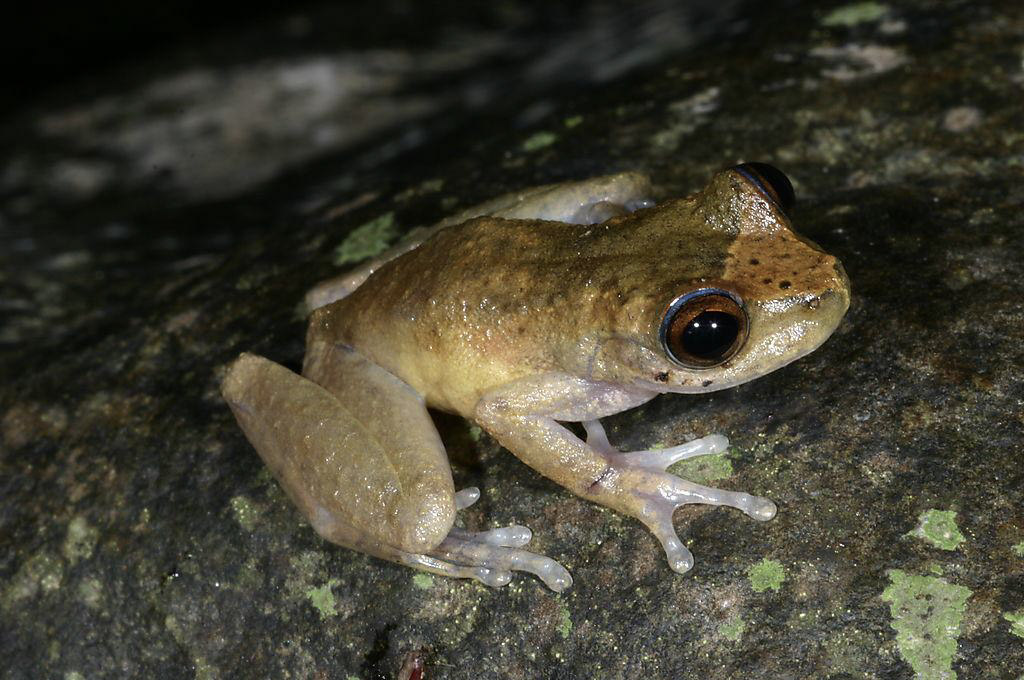Critter Corner – Common Mistfrog

Common Mistfrog (Credit: H.B. Hines DES Qld)
#CritterCorner – Turns out, despite being called the Common Mistfrog (Litoria rheocola), these beauties are not so common anymore – they are classified as Endangered (EN) Decreasing on the IUCN Red List.
Growing to 27-41.2mm and weighing in between 1.2-4.55g, the Common Mistfrog is endemic to the Wet Tropics bioregion and the largest of the three species is found in the Daintree area.
A rainforest specialist, the Common Mistfrog is restricted to fast-flowing rocky creeks and streams in rainforest as well as wet sclerophyll forest. Within these streams they are often found in the slower more open sections, away from waterfalls. You may be able to spot one if you look along the rocks, logs, and vegetation in or adjacent to streams. There are differences in habitat use between the males and the females of the species. Females and juveniles use the streamside vegetation more frequently, while males display strong fidelity to the rocky stream environment.
Tadpoles graze on algae-covered rocks in fast-flowing waters, while the adults feed indiscriminately on both aquatic and terrestrial invertebrates.
Feral pigs are a potential cause of riparian habitat damage and adult frog mortality, as well as disease (chytridiomycosis) and habitat loss. Snakes also pray on Common Mistfrogs.
Fun Facts:
- The call of the Common Mistfrog is quite a unique (and rather nasal) sound of “wreek wreek wreek“. It is a regular, repeated long drawn single-note call.
- They are slender frogs, with long arms and legs, fully webbed feet, and partly webbed hands. The hands and feet have large toe pads, wider than the fingers
- When the Common Mistfrog is looking for a mate the male call from rocks or boulders in creeks or from vegetation overhanging water along streams and creeks in hopes of attracting a female.
Information sourced from apps.des.qld.gov.au, iucnredlist.org + environment.gov.au
Want more good Rainforest news in your life?
Subscribe to our eNews | Follow us on Instagram | Like us on Facebook | Subscribe to our YouTube channel
Help Protect Rainforests Forever
Donate to Protect Rainforests Forever | Become a Rainforest Guardian for as little as $2 a month | Partnership Options

